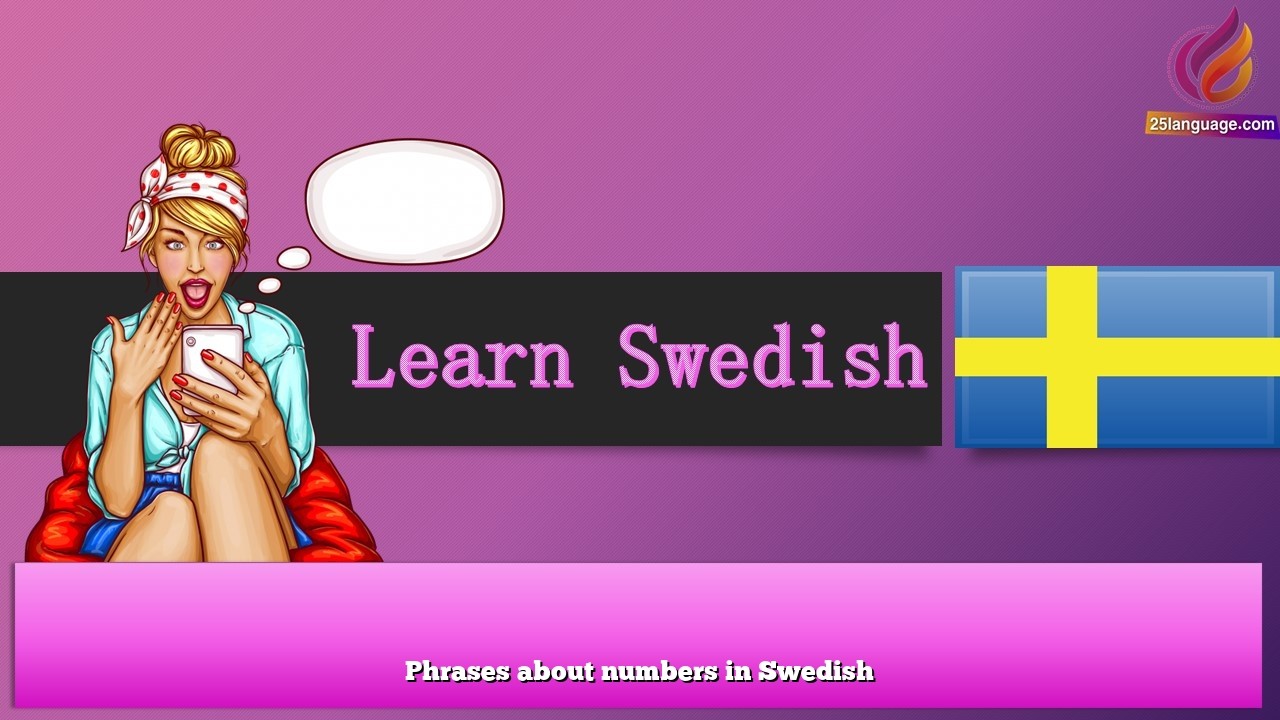present simple in Swedish

The Swedish present tense, known as presens, is one of the most versatile and widely used tenses in the language. It’s essential for expressing actions happening now, routines, general truths, and even future events. In Swedish, the present tense is straightforward because verbs generally take the same form for all subjects. Mastering this tense will enable you to communicate effectively about your daily life, your opinions, and your future plans, making it a fundamental part of becoming fluent in Swedish.
present simple in Swedish
| Swedish Sentence | English Translation |
|---|---|
| Jag äter frukost varje morgon. | I eat breakfast every morning. |
| Hon arbetar på sjukhuset. | She works at the hospital. |
| Vi bor i Stockholm. | We live in Stockholm. |
| De studerar svenska varje dag. | They study Swedish every day. |
| Barnen leker i parken. | The children play in the park. |
| Han skriver ett brev till sin vän. | He writes a letter to his friend. |
| Vi dricker kaffe tillsammans. | We drink coffee together. |
| Hon läser en bok på svenska. | She reads a book in Swedish. |
| De tittar på film på kvällen. | They watch a movie in the evening. |
| Jag går till jobbet varje morgon. | I go to work every morning. |
| Vi lagar middag hemma. | We cook dinner at home. |
| Han ringer sin mamma varje söndag. | He calls his mom every Sunday. |
| Hon sjunger i en kör. | She sings in a choir. |
| Jag tränar på gymmet efter jobbet. | I exercise at the gym after work. |
| Vi besöker våra vänner på helgen. | We visit our friends on the weekend. |
| Han köper frukt på marknaden. | He buys fruit at the market. |
| Hon undervisar i svenska. | She teaches Swedish. |
| Vi går ofta på konserter. | We often go to concerts. |
| Jag sover åtta timmar varje natt. | I sleep eight hours every night. |
| Barnen spelar fotboll efter skolan. | The children play football after school. |
| Hon åker buss till jobbet. | She takes the bus to work. |
| Vi pratar med varandra varje dag. | We talk to each other every day. |
| Han säljer kläder i en butik. | He sells clothes in a store. |
| Jag lär mig något nytt varje dag. | I learn something new every day. |
| Vi planerar resor för sommaren. | We plan trips for the summer. |
Explanation:
In Swedish, verbs in the present tense are regular and consistent, which simplifies the learning process. The present tense is created by adding specific endings to the verb stem, and this form remains the same regardless of the subject (whether it’s jag (I), du (you), han (he), etc.). The Swedish present tense can express not only actions that are happening right now but also habitual actions, general truths, and even near-future actions, making it highly flexible and useful in conversation.
The sentences above demonstrate how everyday actions are conveyed using the present tense. By practicing with these examples, you’ll gain confidence in using this tense in various contexts. Keep practicing, and you’ll see how mastering the Swedish present tense makes expressing yourself in Swedish much easier and more enjoyable!
The Swedish present tense, presens, is a straightforward but versatile tense. Unlike some languages where verbs change forms depending on the subject, Swedish verbs in the present tense remain consistent across all subjects. This regularity makes it a friendly tense to learn, but understanding the different contexts in which it can be used will deepen your ability to communicate accurately and naturally. Let’s dive into the primary uses of the present tense in Swedish with explanations and examples.
The Usage
1. Actions Happening Right Now
The present tense in Swedish is commonly used to describe actions occurring at this very moment.
| Example (Swedish) | Translation (English) |
|---|---|
| Jag dricker vatten. | I am drinking water. |
| Hon skriver ett mejl. | She is writing an email. |
Explanation: Just like “I am drinking water” in English, we use the present tense in Swedish to talk about immediate actions. Note that Swedish does not have a continuous tense (like “am drinking”), so the simple present tense (presens) serves this purpose.
2. Habitual Actions and Routines
The present tense is also used to describe actions that happen regularly, such as daily routines or habits.
| Example (Swedish) | Translation (English) |
|---|---|
| Jag äter frukost varje morgon. | I eat breakfast every morning. |
| Vi går till gymmet varje vecka. | We go to the gym every week. |
Explanation: For expressing routines, Swedish uses the present tense, just like in English. You can specify the frequency using words like varje dag (every day), ofta (often), or ibland (sometimes).
3. General Truths and Facts
The present tense is also used for statements that are universally or generally true, which means they apply at any time.
| Example (Swedish) | Translation (English) |
|---|---|
| Vatten kokar vid 100 grader. | Water boils at 100 degrees. |
| Solen går upp i öster. | The sun rises in the east. |
Explanation: When talking about facts or general truths, Swedish uses the present tense. This includes scientific facts, universal truths, and widely accepted information.
4. Future Plans and Arrangements
Surprisingly, the present tense in Swedish is also used to talk about future events, especially when the timing is clear from context or from additional words in the sentence.
| Example (Swedish) | Translation (English) |
|---|---|
| Vi åker till Italien nästa vecka. | We are going to Italy next week. |
| Hon börjar sitt nya jobb i morgon. | She starts her new job tomorrow. |
Explanation: Even though these actions have not happened yet, the present tense can describe future plans or arrangements when time expressions like nästa vecka (next week) or i morgon (tomorrow) are added. This is similar to the English usage of “I’m starting my new job tomorrow.”
5. Instructions and Commands
The present tense can sometimes be used to give instructions, advice, or commands in a friendly manner.
| Example (Swedish) | Translation (English) |
|---|---|
| Du går rakt fram och sedan svänger du vänster. | You go straight ahead and then turn left. |
| Du tar medicinen två gånger om dagen. | You take the medicine twice a day. |
Explanation: This usage is common in conversational Swedish, especially when giving directions or recommendations. Instead of using an imperative form, people often use the present tense to make instructions sound more conversational and less abrupt.
Summary Table of Uses:
| Usage | Description | Example (Swedish) | Translation (English) |
|---|---|---|---|
| Actions Happening Now | For immediate, current actions. | Jag läser en bok. | I am reading a book. |
| Habitual Actions | For routines and regular activities. | Vi äter middag kl. 18 varje dag. | We eat dinner at 6 PM every day. |
| General Truths | For universal or factual statements. | Träd växer mot solen. | Trees grow toward the sun. |
| Future Plans | For planned future events, especially with time indicators. | Jag reser till Spanien nästa månad. | I am traveling to Spain next month. |
| Instructions and Commands | For conversationally giving directions or advice. | Du går till höger vid nästa korsning. | You go right at the next intersection. |
By understanding these varied uses of the Swedish present tense, learners gain a powerful tool for expressing themselves in different situations. With practice, using presens will feel natural, and you’ll be able to talk about almost anything—from your current activities and daily routines to future plans and facts about the world. Keep practicing, and soon the present tense will be an effortless part of your Swedish vocabulary.





























